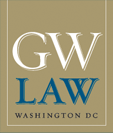Document Type
Article
Publication Date
2012
Status
Accepted
Abstract
Over the past century, the Supreme Court has articulated numerous doctrines that protect family privacy. These doctrines are not, however, well-suited to the brave new world of families formed through donor eggs, sperm, and embryos. As the number of donor-conceived children born to same-sex and heterosexual couples and to single parents increases, and as these families develop connections to one another, the law has not yet adjusted. This Article provides an extensive mapping of these “donor-conceived family communities,” and it reaches two major conclusions that support the development of these new families. First, relational interests, the traditional focus in family law, should govern the regulation of the donor world. Second, legal recognition should be given to the emotional and psychological ties between donor families in order to provide guidance to the development of donor-conceived family communities. These two principles point the way to integrating changing social realities into a new legal framework for donor families, allowing children from the same donor to connect to one another. While further regulation of relationships has its dangers, this paradigm shift in the donor world could prompt broader beneficial changes, creating options beyond framing all families within the dyadic nuclear-family model.
GW Paper Series
GWU Law School Public Law Research Paper No. 2012-24; GWU Legal Studies Research Paper No. 2012-24
SSRN Link
http://ssrn.com/abstract=2018969
Recommended Citation
Naomi Cahn, The New Kinship, 100 Geo. L.J. 367 (2012).
